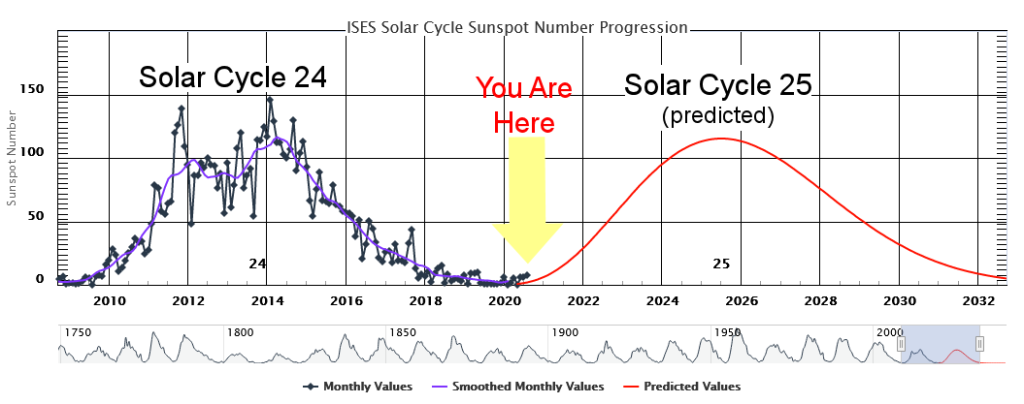Sept. 15, 2020: Solar Cycle 25 is officially underway. NASA and NOAA made the announcement during a media teleconference yesterday, Sept. 15th. According to an international panel of experts, the sunspot number hit rock bottom in Dec. 2019, bringing an end to old Solar Cycle 24. Since then, sunspot counts have been slowly increasing, heralding new Solar Cycle 25.

“How quickly solar activity rises is an indicator on how strong the next solar cycle will be,” says Doug Biesecker of NOAA’s Space Weather Prediction Center, co-chair of the Solar Cycle 25 Prediction Panel. “Although we’ve seen a steady increase in sunspot activity this year, it is slow.”
The panel believes that new Solar Cycle 25 will be a weak one, peaking in 2025 at levels similar to old Solar Cycle 24. If their prediction is correct, Solar Cycle 25 (like Solar Cycle 24 before it) will be one of the weakest since record-keeping began in 1755.
“While we are not predicting a particularly active Solar Cycle 25, violent eruptions from the sun can occur at any time,” warns Biesecker. Indeed, even Solar Minimum can produce a superstorm, so Solar Cycle 25 should not be taken lightly despite the panel’s low expectations. Radio blackouts, power outages and severe geomagnetic storms are possible in the years ahead.

For now, solar activity should remain generally low. Sunspot counts still have a long way to go before they reach levels typical of Solar Maximum. For the rest of 2020, periods of quiet will be occasionally interrupted by minor solar storms, with only a slight chance of big events.
On the bright side, the first Northern Lights of Solar Cycle 25 are dancing around the Arctic Circle right now, and the coming season for aurora watching promises to be the best in years. Stay tuned! Aurora alerts: SMS Text.
